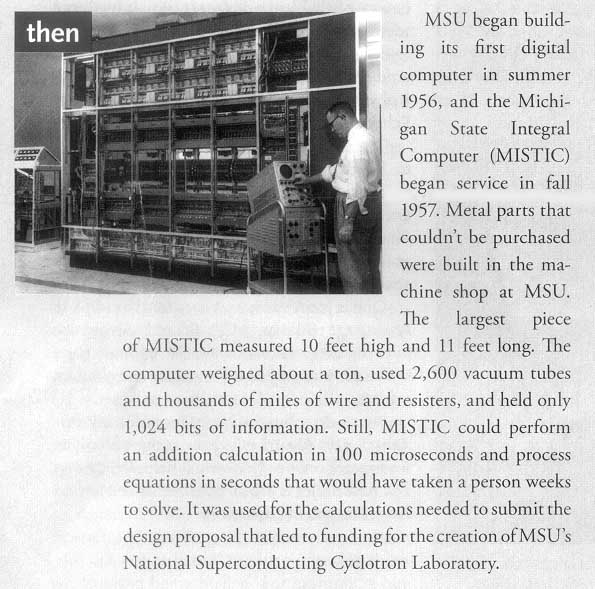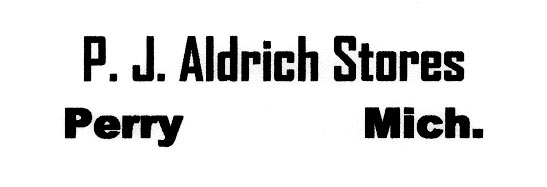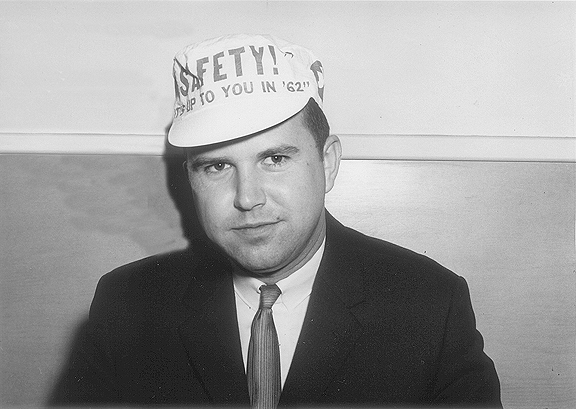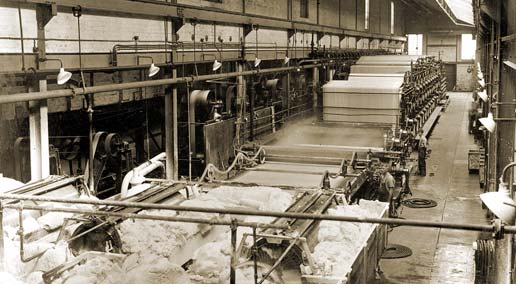THE ROSEBUD PERIOD
With the exception of very brief periods, and those mostly by choice, I worked steadily from the time I was in the eighth grade until my retirement at 65 years old. I was motivated to write a short history of my work experiences after attempting to do it for my grandparents and parents, and wishing they had done it for themselves. Do I expect anyone to care? I frankly donít know. I think there are people who care about ancestry and history, and people who donít. Iím writing this and the information on my ancestors as well, in the hope that at least one of the people who have me as an ancestor will care. If it turns out that there is no one who cares, it doesnít matter, because Iím having a ball writing it!
I also included
my college history, simply because this seems like a good place to put it.
And now Iím sharing all of this with you, dear reader. Delete at your own
peril!

I did the usual odds and ends for money as a child, but I suppose my work
history really started when I was in the eighth grade in Perry, MI. In the
sixth grade in Jackson, MI, I took a class in Printing. We were taught the
history of printing, how to set and distribute movable type, a bit about
paper, and how to run a printing press. I took this vast knowledge with me to
Perry and applied for a job at Watkins Publishing Company when I was an eighth
grader. Ray Watkins, with his two sons Raymond and Bob, published a weekly
newspaper and did job printing Ė stationery, invoices, auction bills, ballots,
labels, etc. Ray hired me part time as a printerís apprentice (often called a
printerís devil) and I was never without a job again (for any significant
time) from then until I retired.
I started at 35c an hour. At first I cleaned up and distributed used type, but I quickly moved on to other things. The office had two small hand fed job presses and a big hand fed Kluge flatbed press for the newspaper. Raymond ran a Linotype machine to produce the text for the newspaper. The Linotype slugs and much of the advertising from car companies and so forth were cast from a lead-antimony mixture. These slugs were constantly recycled, and I got to melt them down and pour them into nice clean ingots. Later, I set type for grocery ads and print jobs, ran the presses, folded and wrapped newspapers, and even ran the Linotype a little. In slower times, I painted the offices and built shelves to help organize the chaos of a busy print shop. I worked for the Watkins until I graduated from high school and then again later on during and after college.
Raymond was the photographer for the newspaper, but for the last part of my stay with them, I covered the high school sports and some local events.
After college, Raymond offered me a permanent position, but I wanted to test my wings and see what the rest of the world had to offer.
Watkins upgraded their equipment periodically. The lead pot was coal fired originally, but gas was installed eventually. The two hand-fed job presses were replaced with a state of the art automatic feed Heidelberg. The last time I visited the office they had a machine that cast the type for display ads so setting movable type by hand was no longer necessary. Watkins eventually went out of business, the needs for a small town weekly newspaper and job printing having been served by TV, fast access to daily papers, copiers, places like Kinkoís, and personal computers. The last time I visited Perry, the building remained, but was no longer occupied.
See Ponogram #10 Ė Printerís Devil


I started college in September of 1951, attending Michigan State College (MSC) on a full tuition scholarship awarded because of my stellar performance in high school. The scholarship was worth $45 per quarter. I went through two full years and one more quarter in the first session, but due to taking full schedules and getting through a lot of the basics on comprehensive exams, I had nearly enough credits to be a Senior. I quit because I just couldnít make it financially. Later on, I made one more quarter and quit again. After the Army, I worked with the Michigan State Highway Department (MSHD), saved some money, and got inspiration from Paul Dural, my niece Sandraís husband. He worked full time and managed to pursue a degree at that other MI school evenings and weekends. I kept watching him and said to myself, if he can keep plugging and get a degree, why canít I? I also realized that I was only one promotion away from the best I would ever do with the MSHD without a degree. So, I quit and went back to school.
I had started in a Chemical Engineering curriculum ten years previously, but the years away were too costly. For example, I started in Advanced Mathematics for Engineers, sat in class for one week, couldnít make heads or tails of it, quit, transferred into Introduction to Economics and did fine. With the help of an advisor and because I had accumulated lots of good credits in the first session, I was able to transfer into what was called a Divisional Major in Mathematical and Physical Science. Effectively, it was a minor in each of Math, Physics, and Chemistry, and I was almost there with previous credits. The only real shortages were a foreign language and 6 more credits in Physics. I took German for the foreign language because I already had a pretty good foundation from having spent two years there. I took Atomic Physics for Teachers and sailed through with a B since it was just learning enough about famous experiments to describe them to a class.
Then the feces hit the air conditioner. I had planned to take Introduction to Astronomy for the last Physics credits but they wouldnít let me. The only option I had was Nuclear Physics, and, guess what? That was a two-quarter course and the only one given this quarter was PART II! This was a heavy class with only twelve students, all but me Physics majors. The final exam had 9 questions. We could pick any 6. I went up after the exam and asked the instructor what the odds were of passing if I had written everything I knew about 3 questions. You know the answer. I came back the next day to see the posted results. There were 4 As, 3 Bs, 2 Cs, 1 D, and 2 Fs. I got the D, sufficient to fill the Physics credit and allow me to graduate with a Bachelor of Science, and not bad enough to ruin my cum laude! I had a recurring dream about failing in college for decades thereafter. Now that I think about it, though, I havenít had that dream all week.
That last term I also took Computer Coding, an introductory course given by the Electrical Engineering Department and the ONLY computer related course available. The course was really basic, but we learned how to program the Michigan State Integral Computer (MISTIC), a computer built by the MSU electrical engineers. Little did I know the influence that course would have on my life!

ODDS AND ENDS
To keep body and soul together during college days, I worked many different jobs, sometimes more than one at a time. I pumped gas at Plowmanís station on the corner of M-47 and M-78 for quite a while. I worked from 6 am to 6 pm on Saturdays and Sundays for 75c an hour. All I did was pump gas (no oil change or repair), and sometimes it was possible to do a little homework or catch a quick nap, but Saturday after a game at Michigan State University (it was probably Michigan State College then) I didnít have time to blow my nose. In those days pumping gas meant full service Ė clean windshields, check oil and water, and sometimes tires!
For a very brief time, maybe only one day, I performed body-sitting duty at LaRoweís Funeral Home. Mostly, I just had to be there, accept deliveries of flowers, etc., answer the phone, act as host for people visiting clients, and make nice. I donít think I was cut out for that job.
I donít even know when I did this, but in about 1949, I worked for Ray Nash, our high school speech teacher, on his farm near Laingsburg. He raised sheep and needed some fencerows to contain the beasts. He elected to try a new idea Ė multiflora roses Ė that the agriculture people were pushing. The belief was that because of these rosesí propensity to proliferate, they would quickly form an impenetrable mound of thorny runners for very little expenditure. The seedlings were very cheap, and so was I. I planted lots of the seedlings and experienced farm life in the form of huge midday meals when the bell called me in from the field. Recently, some 50 years later, I set out to find that farm and enjoy seeing the fencerows that I had created. Finding the farm turned out to be very easy. It is now Nash Nursery, run by Bill Nash, Rayís son. I stopped and chatted with Bill and toured the farm. When I mentioned the rose bushes, he kind of chuckled. Apparently the multiflora rose is now considered an invasive species. They have been fighting the proliferation of those bushes ever since I planted them. They are so pervasive that their use is now illegal. Iíve been on the forefront a lot in my life, but there sure isnít much that has survived.

The other memory of the Nash farm still makes me cringe. To castrate the male sheep and to remove the tails from all of them, a tiny rubber grommet was stretched and then placed over the offending protuberance. When released, the grommet cut off the blood supply and nerves, and in just a few days the parts dropped off. SUPPOSEDLY, this is nearly painless and very humane. Iíve always wondered about that, while I was cringing.
Another short-term job, only one weekend I think, I kept Larry ďStodĒ Stoddard company. He had a cottage up north somewhere and he liked being up there more than his wife did, but he hated to go alone. So, he hired locals to go with him to help with some task or other, but seldom got around to the task. Drank a lot of beer, though!
I worked at Surbeckís station at Shaftsburg road and M-78. There I pumped gas, washed cars, did lube and oil changes, and helped out with repairs. With Jake Surbeckís help, I did a complete overhaul on my í47 Chevrolet.
At the same time, Pat and I had the janitor job at the Shaftsburg School. It was a two-room schoolhouse with a coke furnace. Our job was to sweep the rooms, clean the toilets, empty and burn the trash, take the clinkers out of the furnace, and fill the stoker. I also assembled some playground equipment and oiled the wood floors as special tasks. I will always remember the Shaftsburg School since we were cleaning it when it became time for Pat to go to the hospital for Kimís birth.
One brief period during my
aborted second attempt at college, I worked in a print shop in Lansing Ė you
guessed it Ė printerís devil.

I did a lot of different jobs for P. J. Aldrich
Stores in Perry part-time and full time - furniture delivery, sales,
janitorial, floorcovering measuring and installation, carpet sewing, window
decoration, remodeling, and finally bookkeeping. I kept the books for the
furniture, floorcovering, appliance, and used furniture stores, while doing
sales work in the floorcovering and appliance stores. I did double entry
books, payroll, payables and receivables, and sometimes banking. While full
time I made $75 a week. Most of that work was kind of fun, but now that I
think about it, the bookkeeping was really boring! Last trip, two of the
Aldrich buildings stood idle and the third had burned to the ground.

Immediately after college I spent about 10 weeks touring Europe. When I returned, I worked for Watkins while putting out resumes and doing interviews. Kimberly Clark Corporation gave me a job as a production planner in a paper mill in Kimberly, WI, for $550 a month. This mill had several huge paper machines and produced high quality coated business papers. To introduce me to the mill, my initial job was to tour the mill, learn how things were done, and write a paper describing


operations. I had a schedule arranged for me, with someone in each department assigned to show me around. It was fascinating and I enjoyed most of it, but the assigned periods were too long for me and for the people who were my guides. I wrote up the processes as I went along. I only lasted for about a month and didnít quite finish the training period. My supervisor said what I had done was the best operations report he had ever seen.